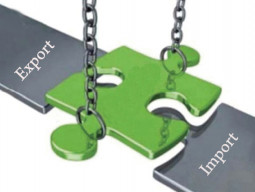
The estimated federal fiscal deficit in this quarter is estimated at over Rs600 billion, equivalent to 2.4 per cent of the projected GDP for 2013-14. The federal budget envisages a federal deficit of 6.3 per cent of GDP for the year. Already, it appears that in just the first quarter, 38 per cent of the projected deficit has been incurred. During the corresponding period of the previous year, the deficit was lower at 1.6 per cent of GDP, and yet, we ended the year with a deficit of eight per cent of GDP.
The IMF had projected a first quarter deficit of Rs418 billion, which appears to have been significantly exceeded. What are the reasons for the large slippage in just three months? First, in early July, the government retired circular debt of Rs138 billion, as the second part of the overall reduction of circular debt. Second, while the FBR revenues have shown good growth of almost 17 per cent, there is a shortfall of almost Rs40 billion in relation to the overly ambitious growth target of 28 per cent in the budget.
Third, the delay in receipt of the Coalition Support Fund money has implied less non-tax revenues by over Rs34 billion. The arrival recently of $322 million on this account should somewhat improve the outcome in the second quarter. A more detailed diagnosis will have to wait for the release of data on fiscal operations by the Ministry of Finance. However, this happens with a significant time lag.
The concern is not only with the unexpectedly large size of the fiscal deficit but also with how it has been financed. Almost Rs750 billion has been borrowed from the SBP, which essentially amounts to printing of money. The stock of market treasury bills with the scheduled banks has actually declined by Rs139 billion. The inflow into National Savings Schemes has been Rs44 billion only, 72 per cent less than in the corresponding period of last year. Net external inflows have been marginal.
It might be argued that the larger fiscal deficit has spilled over in the form of higher aggregate demand on the external balance of payments and is one of the factors responsible for the larger current account deficit. But this is a tenuous link in the Pakistan context. For example, last year, the fiscal deficit was eight per cent of GDP, while the current account deficit was only one per cent of GDP. The stronger link is with inflation. Persistently large deficits financed in major part by printing of money will seriously exacerbate pressures on the price level. Already, the inflation rate has jumped from less than six per cent to nine per cent in four months. It could approach double-digit soon. Given difficulties in financing the deficit and the rise in the inflation rate, it is likely that interest rates will follow an upward path in coming months.
Meanwhile, the provincial governments are probably trying to balance their books in the presence of lower than budgeted transfers. It is likely that unless the FBR revenues show even faster growth, it will close the year with, at best, a small cash surplus, much smaller than anticipated in the IMF programme projections. What options does the government have? Additional taxation must not be resorted to because not only will it be like a death blow to the already slow-growing economy, but it will also impose an intolerable burden on the people, in the wake of heavy taxation in the budget and a quantum jump in power tariffs. If the IMF insists on a mini-budget, then it must be told clearly that this is not politically or economically feasible.
The only option available is, unfortunately, a big cut in development expenditure, along with whatever economy is possible in the current expenditure. This will reduce the prospects for economic revival. We will have to live with the hope that 2014-15 onwards, there will be enough space available for raising the growth rate of the economy, especially if the level of load-shedding is brought down significantly and the bulk of the process of repayment to the IMF is completed.
Published in The Express Tribune, November 7th, 2013.
Like Opinion & Editorial on Facebook, follow @ETOpEd on Twitter to receive all updates on all our daily pieces.
COMMENTS (4)
Comments are moderated and generally will be posted if they are on-topic and not abusive.
For more information, please see our Comments FAQ













































My Tax Money, choose between Government Employee or Pakistan Armed Forces. What Development?
Unfortunately! The So Called Most Educated Government (Before Elections) Failed To Rule Pakistan !
As you well know, having been in government, but with a keen eye on the economy since then, we have always availed of the option to cut development spending because of downside rigidities elsewhere. Sorry folks, we can't cut current spending or God forbid defense spending, so we have to cut development.
If you go back, there is not one year when we have not done that.